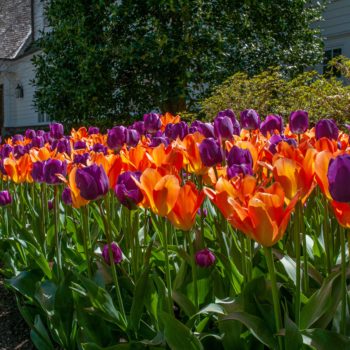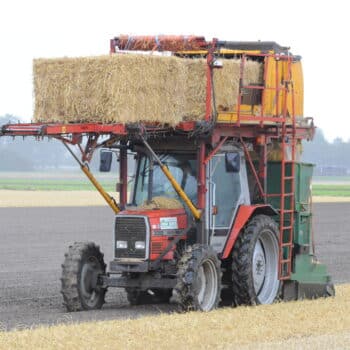by Tovah Martin
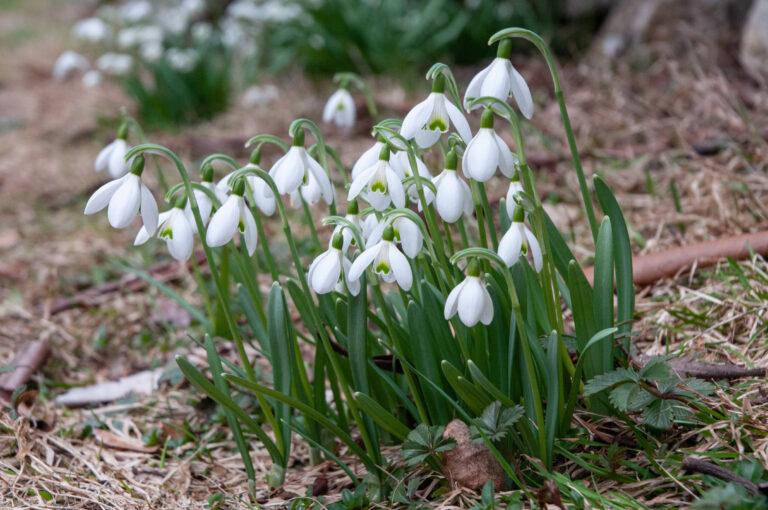
Spring might still be waffling with winter, but the first dance is still staged by a few intrepid early risers.
You spend winter dreaming about Snowdrops. While the garden is shivering through winter, your fantasies are filled with scenarios where Snowdrops play the starring role. Granted, they are far from the flashiest flowers in the year’s playbook. Absolutely, they cannot rival what comes later (like the galloping daffodils and tulips) in terms of dynamic star quality. But still, Snowdrop daydreams keep us going. The message: You need these little flowers in your life. We’re talking about a winter survival tactic here.
What’s amazing about Snowdrops is their tenacity. Snowdrop bulbs are so small—not much larger than a citrus pip—so nobody can blame gardeners for wondering if those little bulbs can possibly survive winter to perform in spring. But amazingly, they have the power. Pop them into the ground in autumn and they were poking their little noses through the snow in February (early this year). Then, they kept up the display doggedly for more than a month. For an investment, we’re talking maximum returns.
Snowdrops begin their performance solo. Really, it’s a soliloquy when they first pop up. A few mature clusters of colchicum are also breaking ground, hellebores are still in tight bud (if they’re wise), but nothing else rallies the courage so early. Snow falls. Snowdrops soldier on. Ice happens. No problem. For Snowdrops everywhere—including the Snowdrops at the Colorblends Spring Garden in Bridgeport—these little warriors are fearless.
Meanwhile, all the vestiges of last season’s garden are still standing, especially if you are in synch with the trend to leave perennials such as sedums, grasses, echinacea, etc standing as long as possible to benefit wildlife and insects. In my garden, the snow and wind of winter have knocked down many perennials, but the seedheads from asters and sedums are still standing strong when the snowdrops step in.
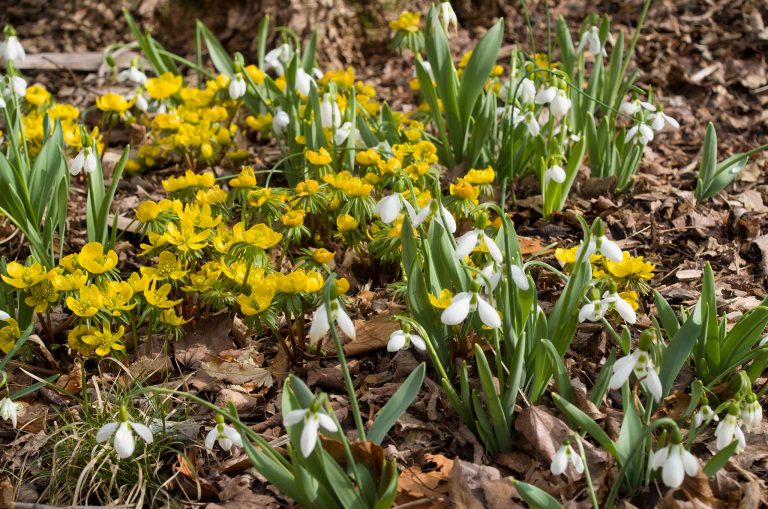
Winter Wolf’s Bane (Eranthis cilicica) isn’t far behind. Not as well known as its fellow early spring conquistadors, Wolf’s Bane pops from the soil and swings immediately into flower mode. Sunny golden yellow, they look like buttercups with a little collar of green fringe below each blossom. A few years will come and go before they really gather force to form a strong colony. But once you’ve got a strong showing of Winter Wolf’s Bane, you can see it shining from a distance. They put a spark into shady sites and love moist soils. Winter Wolf’s Bane is a golden opportunity when you are snatching for hope.
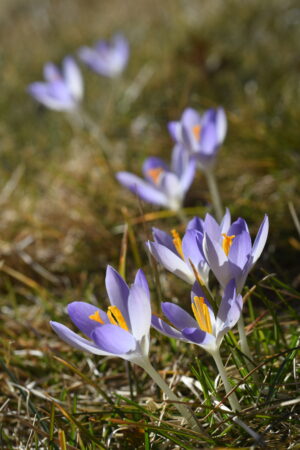 In gardening, it’s all about echoes. So when the first crocuses pop up and swell, the yellows in the crocus blend that Colorblends calls Vernal Jewels™ bring out the canary color of Winter Wolf’s Bane. The beauty of crocuses is that, even when you think they’ve been completely critically crushed by heavy snow, they bounce back when the blizzard is over and the snow finally melts. And even though a March snowstorm might be the last weather prediction you want to hear, at least there’s hope that the crocus will be beneath it all with the potential to revive.
In gardening, it’s all about echoes. So when the first crocuses pop up and swell, the yellows in the crocus blend that Colorblends calls Vernal Jewels™ bring out the canary color of Winter Wolf’s Bane. The beauty of crocuses is that, even when you think they’ve been completely critically crushed by heavy snow, they bounce back when the blizzard is over and the snow finally melts. And even though a March snowstorm might be the last weather prediction you want to hear, at least there’s hope that the crocus will be beneath it all with the potential to revive.
Simultaneously, something else is happening. It’s much more subtle, but definitely part of the picture. While the Snowdrops are performing and the crocus is unfolding, daffodil blades are bravely breaking the soil surface and promising good things to come. At first you think they’re unwise. At first you worry they’ll be nipped. But it’s amazing what those stoic narcissus leaves can endure. They’ll be followed fairly rapidly by allium rosettes and the snouts of early tulip bulbs breaking above the ground. They might endure some nasty weather without batting a blade. March can be as unpredictable as always, the temperature can be like a yo-yo, but these bulbs are not fazed. That’s the survival spirit we all need.

